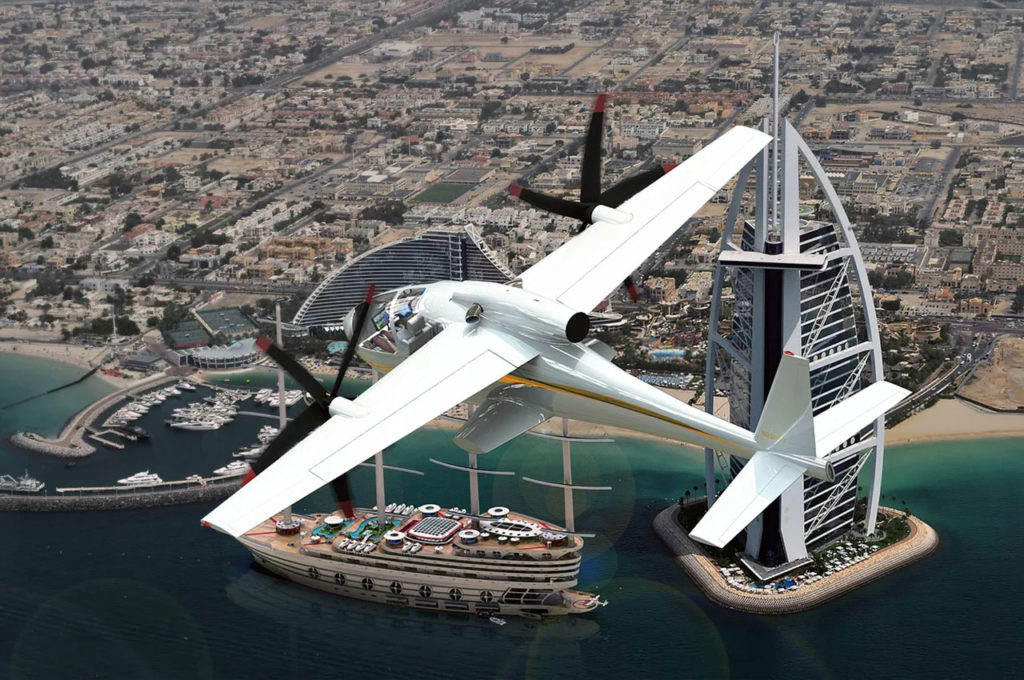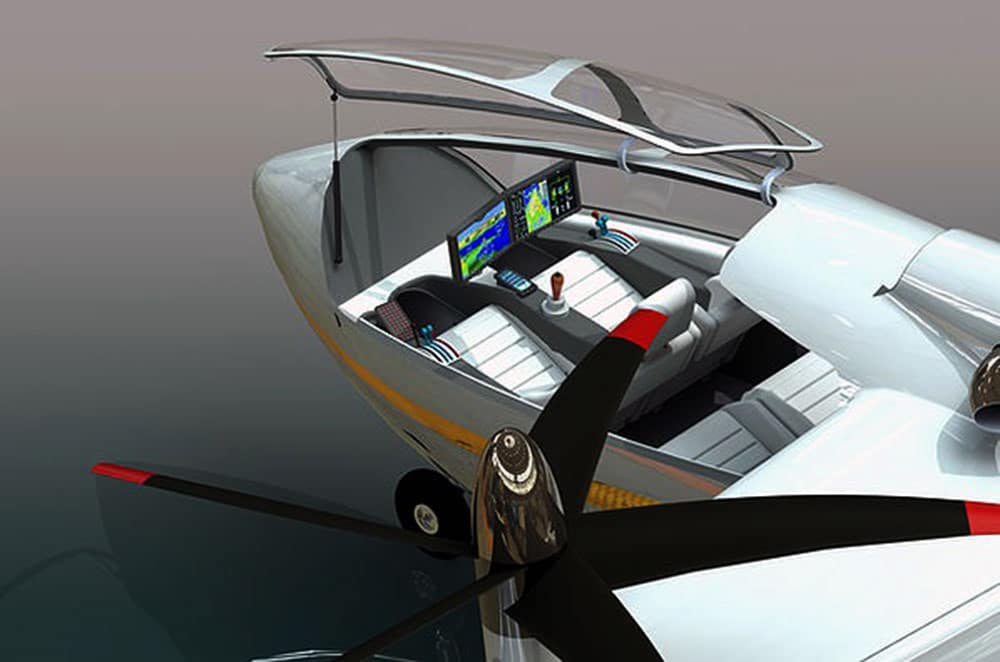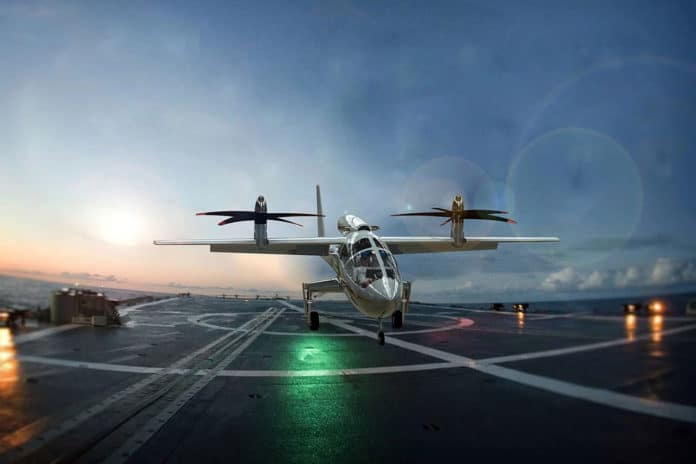The Goliath Series, known for its yacht designs, has released another Steve Kozloff design concept for an electric aircraft – called PEGASUS.
The Pegasus aircraft is unique in that it can take off and land both conventionally and vertically, offering a much wider range of destinations. The 4-seater flying car can shift between the two options depending on the requirements.
The Pegasus has very short field capability in conventional flight mode even with its high wing loading. The aircraft’s two 132″ propellers provide 7,500 lbs of thrust and 1 g+ of acceleration, allowing it to achieve flying speed within 5 seconds while only using 400 ft. of the runway. Also, landing rollout would be very short due to the full reversing propellers.

The Goliath Series explains that though vertical takeoff will often be the preferred option, some situations – such as dusty dirt fields, powdered snow-covered fields, and proximity of light aircraft – might call for runway landings. These situations would make vertical landing or takeoff impractical and not appreciated.
Pegasus features a unique single pt6a67r (1,424 shp) turbine engine that powers a generator, and the generator powers the two electric motors on the wings. This system makes the power transmission from the engine to the rotor less complicated and increases reliability by avoiding the need for combining transmission, driveshafts, and rotor transmissions.

The 32.34 ft (9.8 meters) long aircraft has a wingspan of 33.3 ft (10.14 meter), an empty weight of 3,300lbs (1,497 kg), and stores up to 250 gals (1,710 lbs) of fuel. The company claims its concept will have a range of 1,200 nautical miles or 2,222 km at cruising speeds of 300 kts+ (555 km/h) with 45 min reserve.
While the design is undeniably impressive, it doesn’t have the same level of built-in redundancy seen in other models – a feature that will no doubt help to ease the transition to mass eVTOL transit for many over the coming years. However, it’s worth emphasizing that the Pegasus aircraft is very much in the concept stage; there will likely be changes before we see the finalized model.
